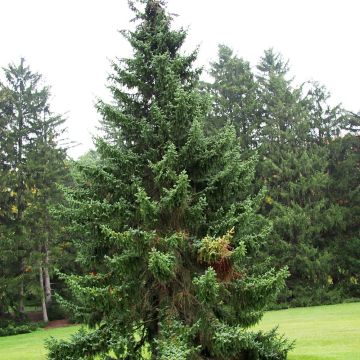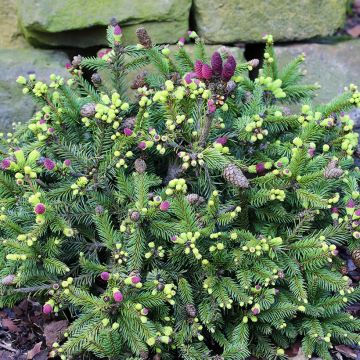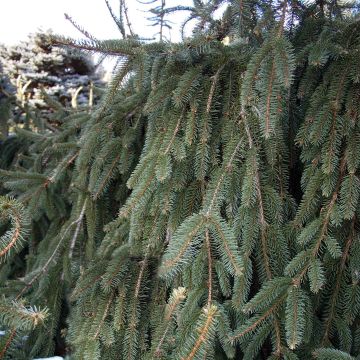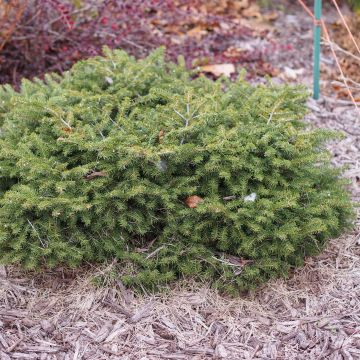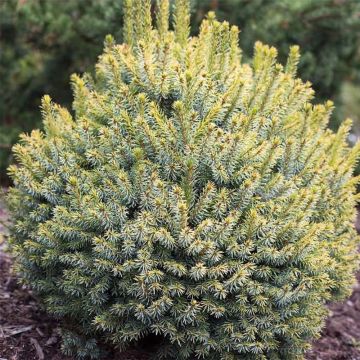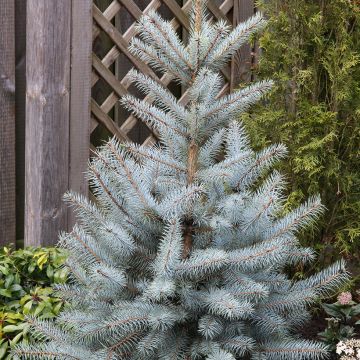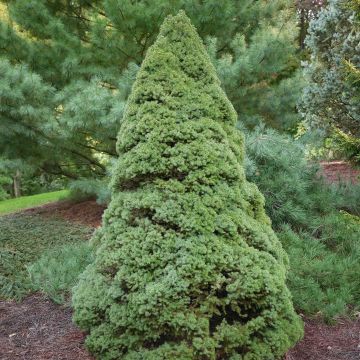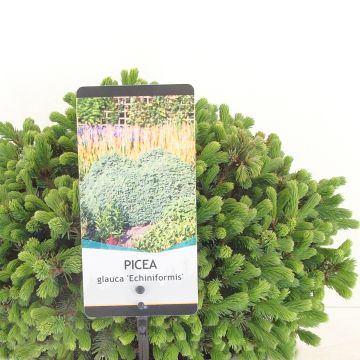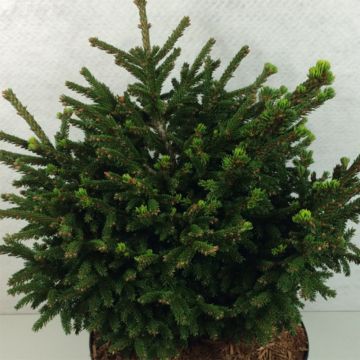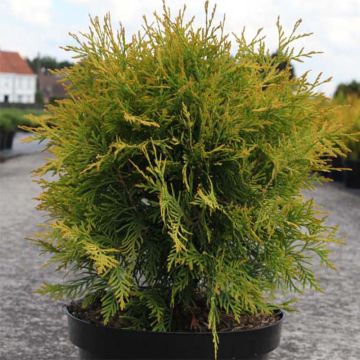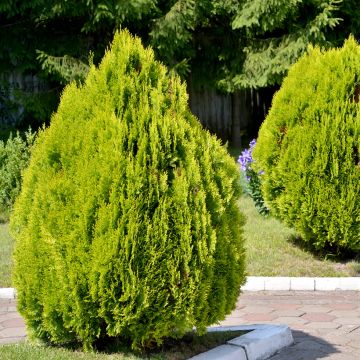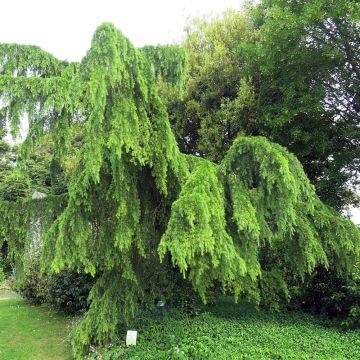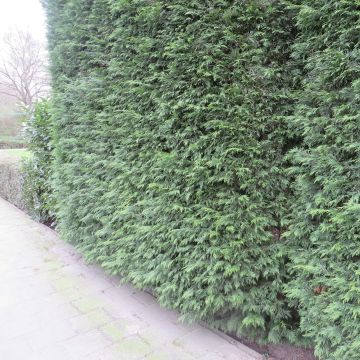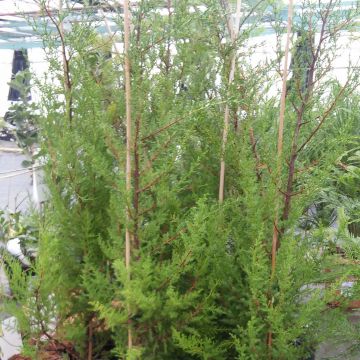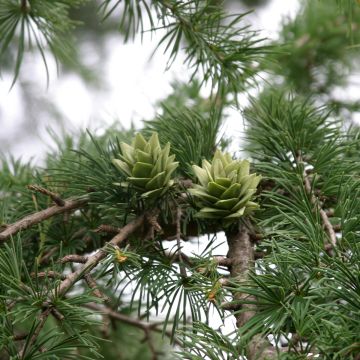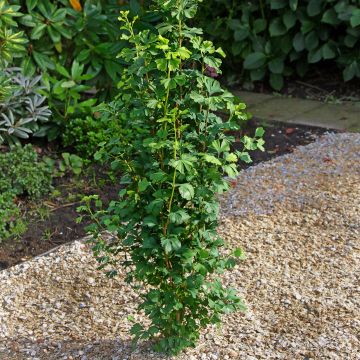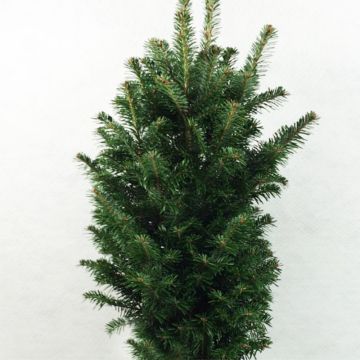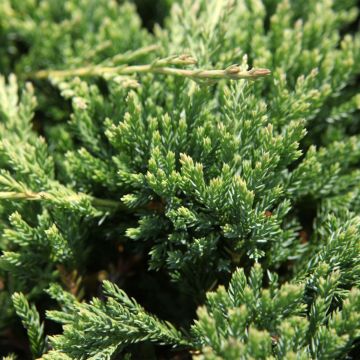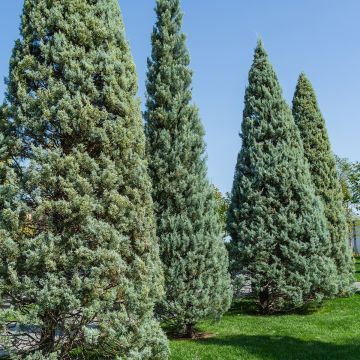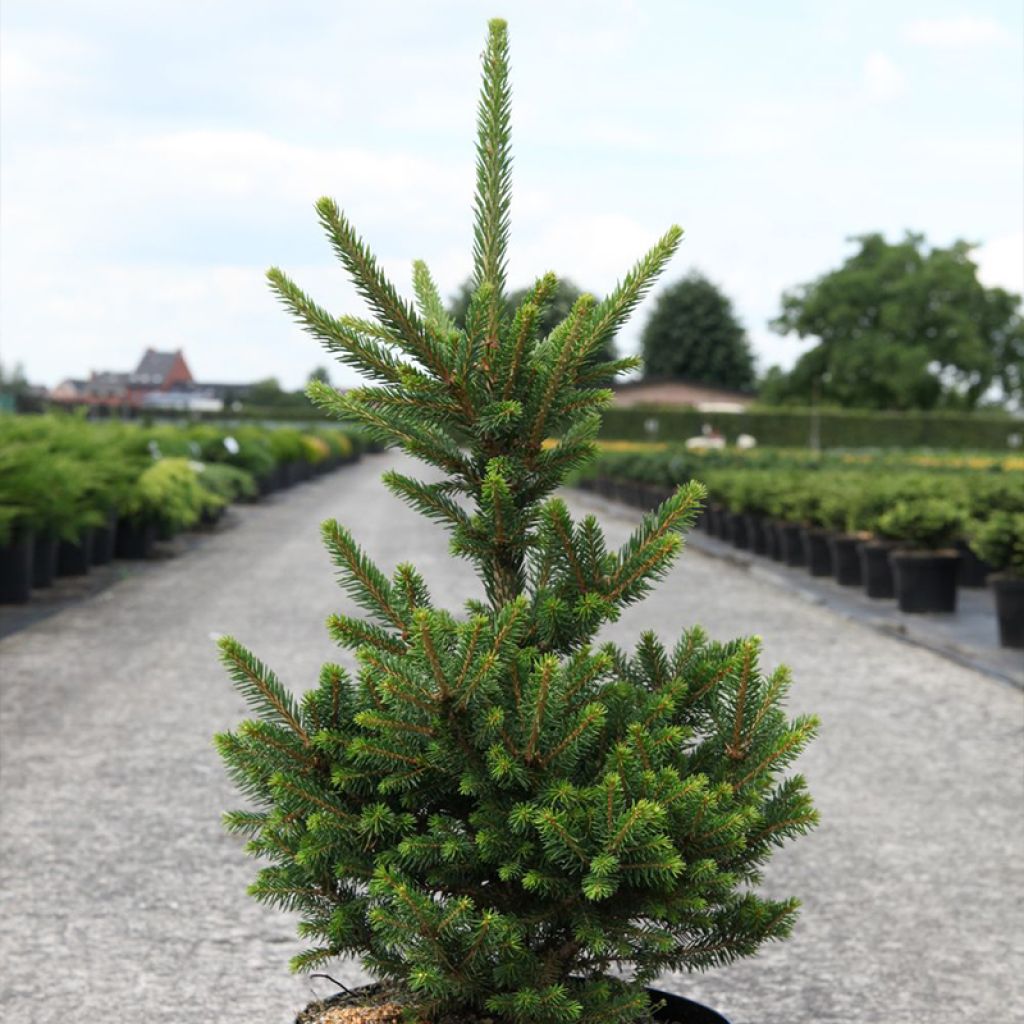

Picea abies Will's Zwerg
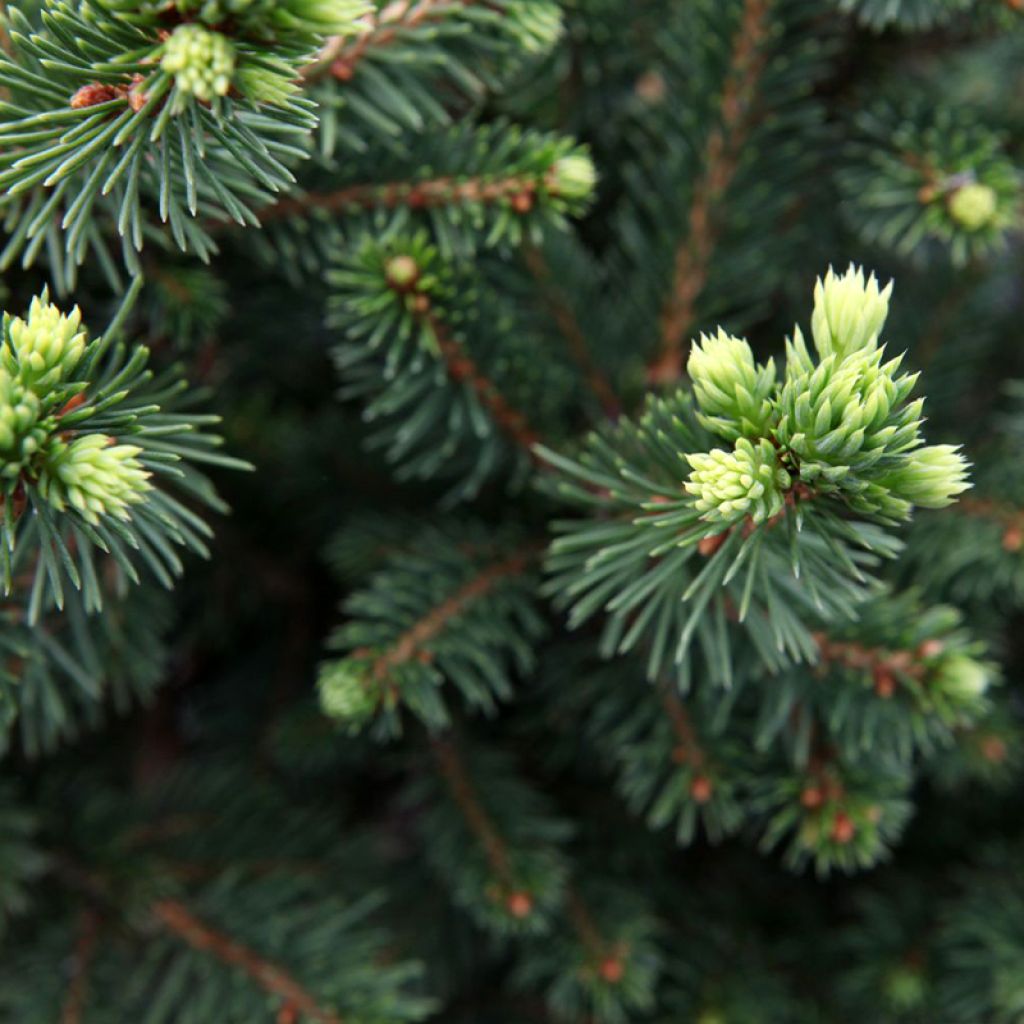

Picea abies Will's Zwerg
Picea abies Will's Zwerg
Picea abies Will's Zwerg
Norway Spruce, European Spruce
This item cannot be shipped to the selected country
Delivery charge from €5.90
Delivery charge from €5.90
More information
Schedule delivery date,
and select date in basket
This plant carries a 24 months recovery warranty
More information
We guarantee the quality of our plants for a full growing cycle, and will replace at our expense any plant that fails to recover under normal climatic and planting conditions.
From €5.90 for pickup delivery and €6.90 for home delivery
Express home delivery from €8.90.
From €5.90 for pickup delivery and €6.90 for home delivery
Express home delivery from €8.90.
Does this plant fit my garden?
Set up your Plantfit profile →
Description
The Picea abies 'Will's Zwerg' is a slow-growing dwarf variety that forms a perfect small, dense conical fir tree. Its modest dimensions allow it to be planted in a large rockery or in a container on a terrace. Its short, stiff needles are light green in their youth and then turn intense shiny green. This conifer is highly hardy and enjoys full sun and limestone-free, cool and well-drained soils.
The Picea abies, also known as the Norway Spruce or Red Spruce, is an evergreen conifer belonging to the pinaceae family, native to northern Europe, specifically Scandinavia. In its natural environment, it has a typically conical and pyramidal habit and can reach a height of 30m (98 ft 5 in) or more in Eastern Europe. This species is traditionally used as a Christmas tree in Europe. This spruce is not afraid of very low temperatures or snow, but it does not tolerate hot and dry climates very well.
The 'Will's Zwerg' variety, derived from this species, is a dwarf form with a regular conical habit. After several decades, it reaches a height of 2m (6 ft 7 in) with a diameter of 1m in a humid climate. Its growth is slow. It has short, stiff branches that are widely arched at the ends, spirally arranged on highly layered branches. Its young spring shoots are a very tender, bright green, then its foliage darkens and becomes intense and shiny green. Its small evergreen leaves are stiff needles, very sharp, arranged all around the branches in a tuft. The root system of spruces is shallow and trailing, making them difficult to transplant when mature and particularly sensitive to wind.
The dwarf fir 'Will's Zwerg', with its perfect conical habit, as well as its very compact size without maintenance, is a plant that will be highlighted on a short grass meadow or in a rockery. As it adapts well to growing in large pots, it can also adorn a terrace. This variety goes well with large stones, geometric lines, and masonry structures. It can also be associated with columnar or erect dwarf conifers. The real graphic qualities of conifers naturally impose themselves in the design of a contemporary garden, which prefers the aesthetics of shapes, silhouettes, and textures to the dance of blooms. These plants with reassuring permanence durably structure a massif, mark pathways, border terraces, easily replacing the strong presence of trimmed boxwood or holly. They go well with ground cover plants such as aubrietas, cerastiums, perennial salvias, as well as flowering shrubs. The key is to play with volumes and colours.
Report an error about the product description
Picea abies Will's Zwerg in pictures
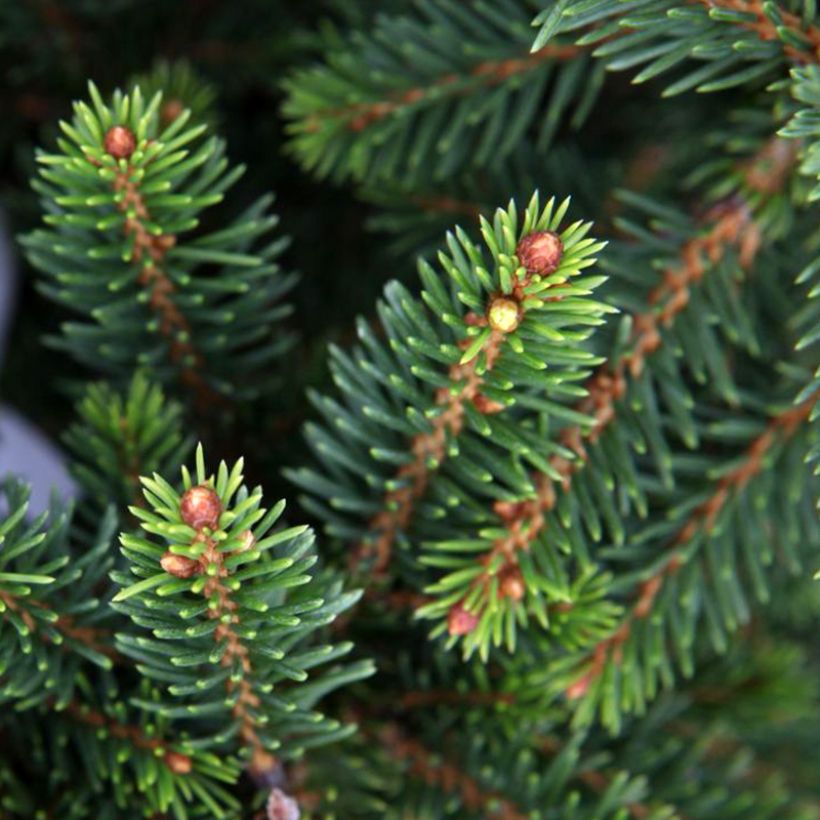

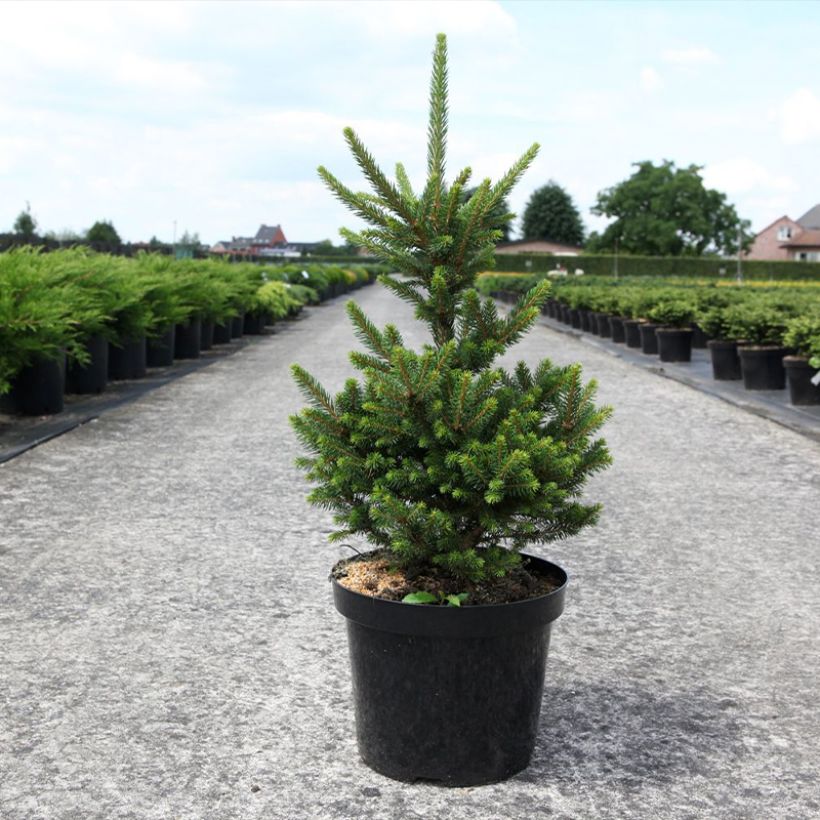

Plant habit
Foliage
Botanical data
Picea
abies
Will's Zwerg
Pinaceae
Norway Spruce, European Spruce
Cultivar or hybrid
Other Picea
Planting and care
The Picea abies 'Will's Dwarf' should be planted from September to November and from February to June in deep, well-drained, light, preferably non-calcareous and not too dry soil. A loamy soil would be perfect. Choose a very sunny or semi-shaded spot protected from prevailing winds. Soak the rootballs well before planting. Add organic amendment during planting and water generously in the first few years, especially during prolonged drought. Apply a special conifer fertilizer every year in April and cultivate the soil in summer. This extremely hardy conifer, however, fears heavy soils that become waterlogged in winter. It also fears arid conditions and scorching summers. Pruning is not necessary, on the contrary, as this plant expresses its full potential when allowed to grow freely.
Planting period
Intended location
Care
This item has not been reviewed yet - be the first to leave a review about it.
Conifers
Haven't found what you were looking for?
Hardiness is the lowest winter temperature a plant can endure without suffering serious damage or even dying. However, hardiness is affected by location (a sheltered area, such as a patio), protection (winter cover) and soil type (hardiness is improved by well-drained soil).

Photo Sharing Terms & Conditions
In order to encourage gardeners to interact and share their experiences, Promesse de fleurs offers various media enabling content to be uploaded onto its Site - in particular via the ‘Photo sharing’ module.
The User agrees to refrain from:
- Posting any content that is illegal, prejudicial, insulting, racist, inciteful to hatred, revisionist, contrary to public decency, that infringes on privacy or on the privacy rights of third parties, in particular the publicity rights of persons and goods, intellectual property rights, or the right to privacy.
- Submitting content on behalf of a third party;
- Impersonate the identity of a third party and/or publish any personal information about a third party;
In general, the User undertakes to refrain from any unethical behaviour.
All Content (in particular text, comments, files, images, photos, videos, creative works, etc.), which may be subject to property or intellectual property rights, image or other private rights, shall remain the property of the User, subject to the limited rights granted by the terms of the licence granted by Promesse de fleurs as stated below. Users are at liberty to publish or not to publish such Content on the Site, notably via the ‘Photo Sharing’ facility, and accept that this Content shall be made public and freely accessible, notably on the Internet.
Users further acknowledge, undertake to have ,and guarantee that they hold all necessary rights and permissions to publish such material on the Site, in particular with regard to the legislation in force pertaining to any privacy, property, intellectual property, image, or contractual rights, or rights of any other nature. By publishing such Content on the Site, Users acknowledge accepting full liability as publishers of the Content within the meaning of the law, and grant Promesse de fleurs, free of charge, an inclusive, worldwide licence for the said Content for the entire duration of its publication, including all reproduction, representation, up/downloading, displaying, performing, transmission, and storage rights.
Users also grant permission for their name to be linked to the Content and accept that this link may not always be made available.
By engaging in posting material, Users consent to their Content becoming automatically accessible on the Internet, in particular on other sites and/or blogs and/or web pages of the Promesse de fleurs site, including in particular social pages and the Promesse de fleurs catalogue.
Users may secure the removal of entrusted content free of charge by issuing a simple request via our contact form.
The flowering period indicated on our website applies to countries and regions located in USDA zone 8 (France, the United Kingdom, Ireland, the Netherlands, etc.)
It will vary according to where you live:
- In zones 9 to 10 (Italy, Spain, Greece, etc.), flowering will occur about 2 to 4 weeks earlier.
- In zones 6 to 7 (Germany, Poland, Slovenia, and lower mountainous regions), flowering will be delayed by 2 to 3 weeks.
- In zone 5 (Central Europe, Scandinavia), blooming will be delayed by 3 to 5 weeks.
In temperate climates, pruning of spring-flowering shrubs (forsythia, spireas, etc.) should be done just after flowering.
Pruning of summer-flowering shrubs (Indian Lilac, Perovskia, etc.) can be done in winter or spring.
In cold regions as well as with frost-sensitive plants, avoid pruning too early when severe frosts may still occur.
The planting period indicated on our website applies to countries and regions located in USDA zone 8 (France, United Kingdom, Ireland, Netherlands).
It will vary according to where you live:
- In Mediterranean zones (Marseille, Madrid, Milan, etc.), autumn and winter are the best planting periods.
- In continental zones (Strasbourg, Munich, Vienna, etc.), delay planting by 2 to 3 weeks in spring and bring it forward by 2 to 4 weeks in autumn.
- In mountainous regions (the Alps, Pyrenees, Carpathians, etc.), it is best to plant in late spring (May-June) or late summer (August-September).
The harvesting period indicated on our website applies to countries and regions in USDA zone 8 (France, England, Ireland, the Netherlands).
In colder areas (Scandinavia, Poland, Austria...) fruit and vegetable harvests are likely to be delayed by 3-4 weeks.
In warmer areas (Italy, Spain, Greece, etc.), harvesting will probably take place earlier, depending on weather conditions.
The sowing periods indicated on our website apply to countries and regions within USDA Zone 8 (France, UK, Ireland, Netherlands).
In colder areas (Scandinavia, Poland, Austria...), delay any outdoor sowing by 3-4 weeks, or sow under glass.
In warmer climes (Italy, Spain, Greece, etc.), bring outdoor sowing forward by a few weeks.

































